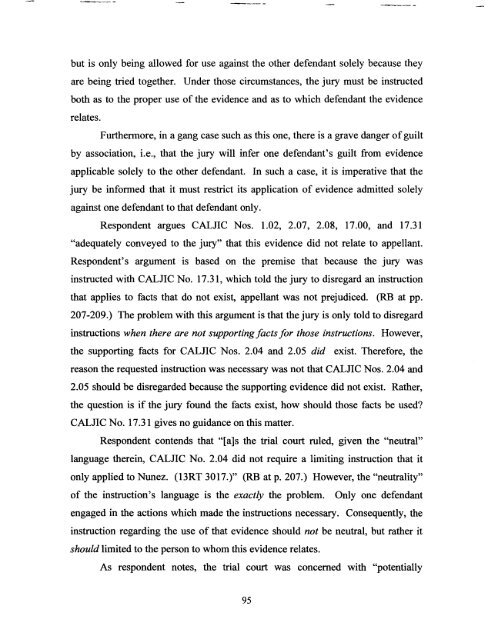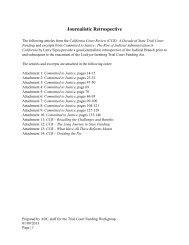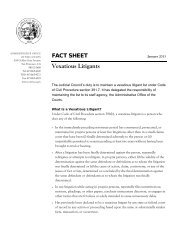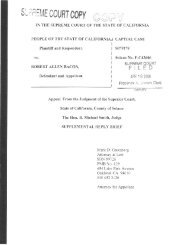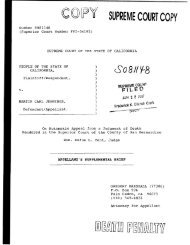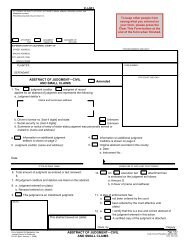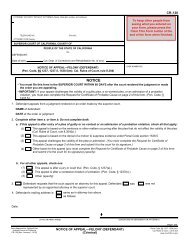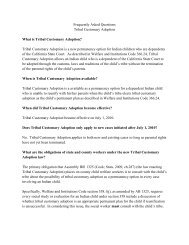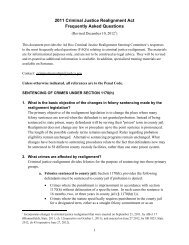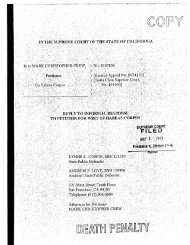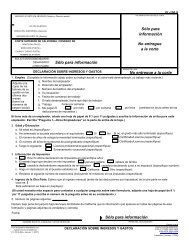Appellant, William Satele, Reply Brief - California Courts - State of ...
Appellant, William Satele, Reply Brief - California Courts - State of ...
Appellant, William Satele, Reply Brief - California Courts - State of ...
You also want an ePaper? Increase the reach of your titles
YUMPU automatically turns print PDFs into web optimized ePapers that Google loves.
ut is only being allowed for use against the other defendant solely because they<br />
are being tried together. Under those circumstances, the jury must be instructed<br />
both as to the proper use <strong>of</strong> the evidence and as to which defendant the evidence<br />
relates.<br />
Furthermore, in a gang case such as this one, there is a grave danger <strong>of</strong>guilt<br />
by association, Le., that the jury will infer one defendant's guilt from evidence<br />
applicable solely to the other defendant. In such a case, it is imperative that the<br />
jury be informed that it must restrict its application <strong>of</strong> evidence admitted solely<br />
against one defendant to that defendant only.<br />
Respondent argues CALnC Nos. 1.02, 2.07, 2.08, 17.00, and 17.31<br />
"adequately conveyed to the jury" that this evidence did not relate to appellant.<br />
Respondent's argument is based on the premise that because the jury was<br />
instructed with CALnC No. 17.31, which told the jury to disregard an instruction<br />
that applies to facts that do not exist, appellant was not prejudiced. (RB at pp.<br />
207-209.) The problem with this argument is that the jury is only told to disregard<br />
instructions when there are not supporting facts for those instructions. However,<br />
the supporting facts for CALnC Nos. 2.04 and 2.05 did exist. Therefore, the<br />
reason the requested instruction was necessary was not that CALnC Nos. 2.04 and<br />
2.05 should be disregarded because the supporting evidence did not exist. Rather,<br />
the question is if the jury found the facts exist, how should those facts be used?<br />
CALnC No. 17.31 gives no guidance on this matter.<br />
Respondent contends that "[a]s the trial court ruled, given the "neutral"<br />
language therein, CALnC No. 2.04 did not require a limiting instruction that it<br />
only applied to Nunez. (13RT 3017.)" (RB at p. 207.) However, the "neutrality"<br />
<strong>of</strong> the instruction's language is the exactly the problem. Only one defendant<br />
engaged in the actions which made the instructions necessary. Consequently, the<br />
instruction regarding the use <strong>of</strong> that evidence should not be neutral, but rather it<br />
should limited to the person to whom this evidence relates.<br />
As respondent notes, the trial court was concerned with "potentially<br />
95


